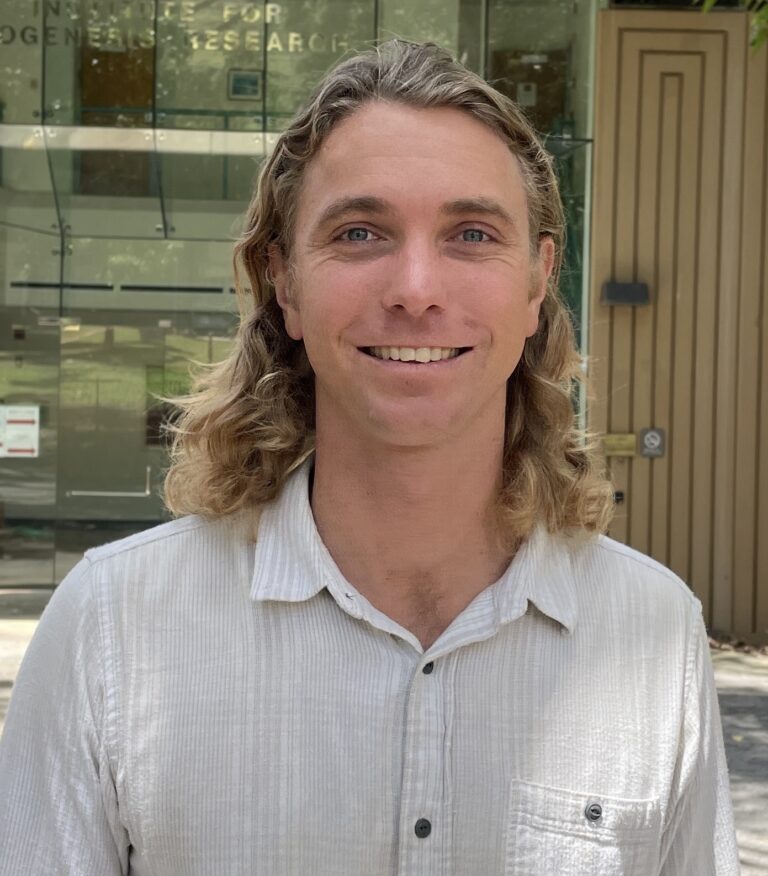
Jesse B. Owens, Ph.D.
Assistant Professor
Area of Expertise ~ Genome Editing
Email: jbowens@hawaii.edu
Phone: +1 808-692-1503
Biography: Dr. Owens is currently an Assistant Researcher at the Institute for Biogenesis Research in the Department of Anatomy at the John A. Burns School of Medicine. His teaching and research activities will take place primarily at the University of Hawaiʻi at Mānoa and at the Kakaʻako. Dr. Owens received his Ph.D. in Cell and Molecular Biology from the University of Hawaii in 2014. He completed 2 years of post-doctoral training at the Institute of Biogenesis Research and was hired in his current position in 2016. He has been selected to fill a tenure-tack position in our Department starting August 1, 2022.
Research: Our lab is investigating new tools for improved genome editing. Specifically, we are focused on developing insertional vectors such as transposons and recombinases to enable safer and more efficient gene delivery to diverse tissues. TALEN and CRISPR nucleases are excellent at intentionally mutating sequences. They can also be used to deliver DNA insertions into dividing cells but are inefficient at delivering DNA into non-dividing cells. This is because the host repair proteins required for homology directed repair are only present during cell division. Because most of the cells of the body are non-dividing, nucleases are not the choice technology for gene addition to the tissues. Instead, the most common gene delivery approaches are virus-based. These approaches are often highly efficient but can cause unwanted immune responses. Also, many virus-based approaches can only deliver small cargos. For example, AAV is limited to 4.7kb and lentivirus is limited to 11kb. Non-viral strategies have been developed to overcome many of the limitations of virus-based vectors. Specifically, transposon-based approaches consist of a transposase enzyme and a transposon DNA element. Within the transposon, the gene-of-interest is flanked by terminal repeat elements (TREs). The transposase enzyme recognizes the TREs, cuts out the transposon, and permanently inserts it into the genome. The piggyBac transposon system is highly efficient, non-immunogenic, and capable of delivering extremely large (>100kb) inserts permanently into the genome. Normally, piggyBac is capable of inserting at millions of potential genomic sites. However, a concern with uncontrolled integration by both transposons and viruses is that an important gene such as a tumor suppressor or oncogene could be disrupted. Also, insertions that land in methylated areas of the genome may cause silencing the gene-of-interest. Ideally, insertions would occur at a known location. Our lab fused DNA binding proteins to piggyBac in order to tether the transposase near specific sequences in the genome. We demonstrated that re-locating piggyBac is this way caused the transposase to insert at these sequences. Building on this proof-of-concept, we attempted to direct our gene of interest to a single intended site.We generated a custom TALE DNA binding protein designed to bind a single sequence within the CCR5 safe harbor locus. By tethering our TALE to either the transposon or the transposase we demonstrated gene delivery to CCR5 in human cell lines.
We used this approach to isolate clones containing a single insertion at the CCR5 sequence. Our recent publication utilized the genome targeting properties of CRISPR Cas9. A drawback with TALE-based approaches is that a new protein needs to be designed for each new target sequence. This difficulty has prevented many labs from using TALEs. On the other hand, CRISPR–based approaches only require a small guide RNA to be designed for each new target. This RNA can be purchased or made in the lab in just three days at minimal cost. We fused the piggyBac transposase to a ‘dead’ version of Cas9 (dCas9) that binds the genome but does not induce double-strand breaks. We demonstrated that guide RNAs designed to bind CCR5 were capable of delivering our piggyBac-dCas9 fusion protein to the genome in human cell lines and recovered targeted insertions of our transgene. We also isolated clones that contained a single, targeted insertion. This word represents the first proof of concept that RNA can be used to target transposition to the human genome. For a review of targeting transposons to the genome see our book chapter. Our current focus is to further improve this technology to generate a system capable of inserting specifically at a desired sequence and nowhere else.
We are also interested in tissue-specific delivery approaches for our insertional vectors. A benefit to using non-viral, DNA-based vectors is that these approaches are amenable to advanced tissue delivery approaches such as ultrasound targeted microbubble destruction (UTMD). During UTMD, a DNA vector encoding a gene of interest is complexed with microbubbles. The bubbles are injected intravenously and travel throughout the body. Low energy ultrasound is directed at the target tissue resulting in cavitation of the bubbles and release of the vector into the surrounding cells. We have used UTMD to deliver piggyBac to stably into the liver and are now investigating methods for brain delivery of therapeutic genes.
Finally, we have just begun a new project with the new Center for Translational Research on Aging with the Kuakini Medical center. We are developing new mouse models to study improvements to longevity and lifespan.